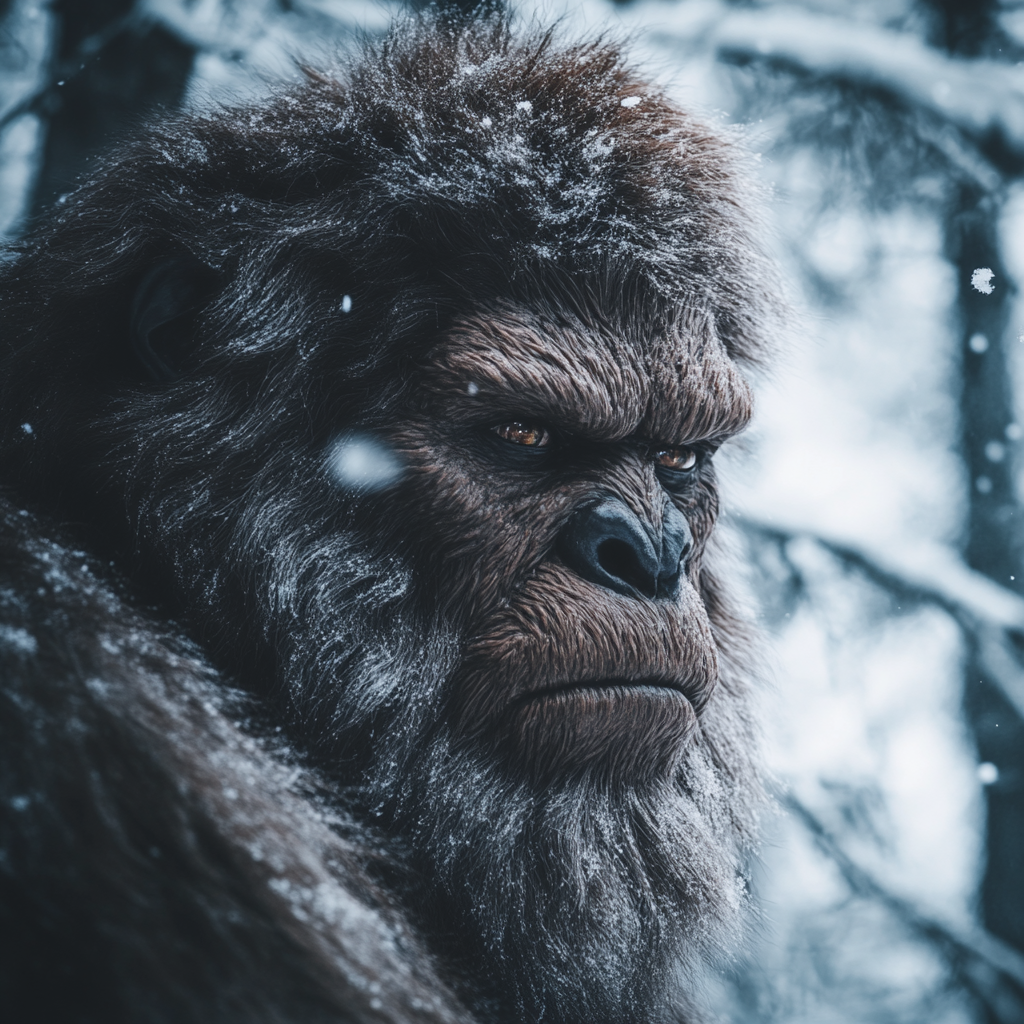Few legends captivate the imagination as much as Sasquatch, also known as Bigfoot. This mysterious, ape-like creature has been the subject of countless sightings, stories, and debates. Whether it’s a grainy photo or an eerie tale told around a campfire, Sasquatch has found its place in popular culture, leaving people to question: could such a creature truly exist?
The allure of Sasquatch is rooted in humanity’s fascination with the unknown. Stories of hidden creatures dwelling in dense forests have persisted for centuries, often bridging the gap between myth and reality. This fascination has fueled books, movies, and even scientific expeditions, making Sasquatch one of the most enduring figures in cryptozoology.
Origins of the Sasquatch Legend
The Sasquatch legend has deep roots in Indigenous folklore. Native American tribes across North America have long told tales of giant, hairy beings roaming the forests. These stories, often passed down orally, describe creatures with human-like intelligence and spiritual significance. For example, the Sts’ailes people of British Columbia refer to Sasquatch as “Sesq’ets,” meaning “wild man,” a being said to live in harmony with nature.
During the 19th century, European settlers added their interpretations, blending Indigenous accounts with their own myths of wild men and forest spirits. Reports of strange footprints or unexplained sounds in the wilderness fueled speculation about a creature lurking just beyond the limits of human habitation.
The 20th century saw Sasquatch become a pop-culture phenomenon. The infamous Patterson-Gimlin film of 1967, purportedly showing a Sasquatch walking through a forest, solidified its status as a modern legend. Despite widespread skepticism, the legend persists, drawing people into the mystery of its origins and fueling debates over its authenticity.
Common Myths and Misconceptions
The Sasquatch legend is riddled with myths that continue to shape public perception. One of the most prevalent beliefs is that Sasquatch is a giant, standing over eight feet tall with immense strength. While many sightings describe such dimensions, skeptics argue that eyewitnesses may exaggerate due to fear or poor visibility.
Another common misconception is that Sasquatch possesses extraordinary abilities, such as the power to remain completely hidden or communicate telepathically. While these traits add an air of mystery, there is no scientific basis for such claims. In reality, these ideas often stem from folklore or embellishments in modern retellings.
Finally, many believe Sasquatch is a solitary creature living in remote forests. However, if such a species existed, experts argue it would need a sustainable population to survive. This lack of evidence—such as bones or genetic traces—raises doubts about its existence, suggesting that many myths are more fiction than fact.
The Science Behind Sasquatch Sightings
Science offers intriguing explanations for Sasquatch sightings. Many encounters can be attributed to perceptual errors, where individuals mistake bears, moose, or even shadows for something more mysterious. In dense forests, where visibility is limited, it’s easy for the mind to create shapes and movements out of the ordinary.
Biologists and anthropologists also suggest that some sightings could be linked to unknown or extinct species. For example, Gigantopithecus, an ancient ape that lived in Asia, is often cited as a possible inspiration for Sasquatch myths. However, no direct evidence connects this creature to North America.
Psychological factors play a significant role as well. The phenomenon of pareidolia, where the brain sees familiar patterns like faces in random stimuli, may explain why people believe they see Sasquatch. Combined with the human tendency to share and amplify extraordinary stories, science provides plausible alternatives to supernatural explanations.
The Role of Hoaxes and Misidentifications
No discussion of Sasquatch is complete without addressing hoaxes. Over the decades, numerous individuals have fabricated evidence to support the legend, from fake footprints to manipulated photographs. These hoaxes, often created for fame or financial gain, muddy the waters for genuine investigation and fuel public skepticism.
Misidentifications also play a major role in keeping the Sasquatch myth alive. In many cases, wildlife such as bears standing on their hind legs or large humans in remote areas are mistaken for Sasquatch. These instances are often accompanied by poor lighting, distance, or the adrenaline of the moment, which can distort perception.
Despite the prevalence of hoaxes and errors, the enduring belief in Sasquatch demonstrates humanity’s deep desire for mystery and wonder. Whether it’s a longing for a connection to nature or a fascination with the unknown, the myth of Sasquatch thrives on the fine line between reality and imagination.
Key Points Summarized
- Historical Roots: Sasquatch has origins in Indigenous folklore, later amplified by settler tales.
- Scientific Explanations: Sightings are often due to perceptual errors, psychological phenomena, or misidentifications.
- Role of Hoaxes: Fabricated evidence perpetuates the myth but undermines serious inquiry.
Also, we recommend that you read our article, in which we told you what we know about the habitat of the bigfoot.
FAQ
It stems from Indigenous folklore and was later influenced by settler stories.
Perceptual errors, misidentification of animals, and psychological factors.
The mix of human fascination, hoaxes, and storytelling keeps the legend alive.

